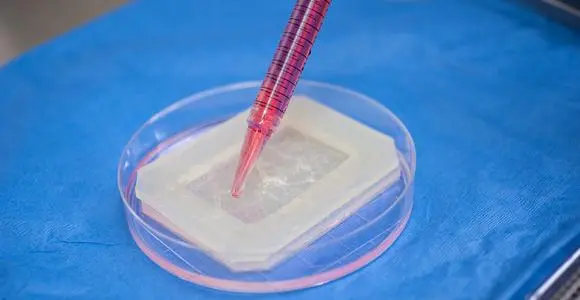Stick with me here. This really is kind of wonderful.
This story concerns four women who were born with Mayer-Rokitansky-Küster-Hauser Syndrome, a rare genetic condition that results in an underdeveloped or absent vagina and uterus. Traditional surgical treatments are painful, and have a complication rate of 75% (all the worse when you consider that these are pediatric patients). But because it’s the future now, scientists have developed an effective, less traumatic way of giving these patients a more typical anatomy: lab-grown vaginas, engineered with each patient’s own cells.
The study (published earlier this week in The Lancet) was conducted by a team of researchers in the US and Mexico, led by Professor Anthony Atala of the Wake Forest School of Medicine. The surgeries took place between 2005 and 2008, with four patients between the ages of 13 and 18. The procedure itself is a fascinating, weirdly elegant example of how adaptable the human body is. First, a small tissue sample was taken from each patient. The cells were extracted and expanded, then affixed to a biodegradable scaffold (tailored to each patient’s body). After seven days of cell growth, the scaffold was surgically implanted and sutured to existing reproductive structures. Over time, the patients’ bodies began to integrate the new addition, creating support structures of nerves and blood vessels. Eventually, the scaffold was absorbed, leaving a functional vagina in its place. Years later, no complications have been discovered, and the engineered structures are indistinguishable from the patients’ native tissues. The women who underwent the procedure now have healthy sexual function, and report that they experience pain-free intercourse and orgasm. Hooray!
The researchers point out that due to the current study’s limited size, more clinical experience is needed. Still, the procedure is hugely promising. Aside from providing a life-changing treatment for patients with this particular condition, the study notes that this procedure might also be used for patients with vaginal cancer or injuries. A similar procedure has also been used to create new urethras for young boys. All in all, it’s a big deal for regenerative medicine.
Science, you guys. Science.
(Image credit: Wake Forest Institute of Regenerative Medicine)
Are you following The Mary Sue on Twitter, Facebook, Tumblr, Pinterest, & Google +?









Published: Apr 12, 2014 12:00 pm